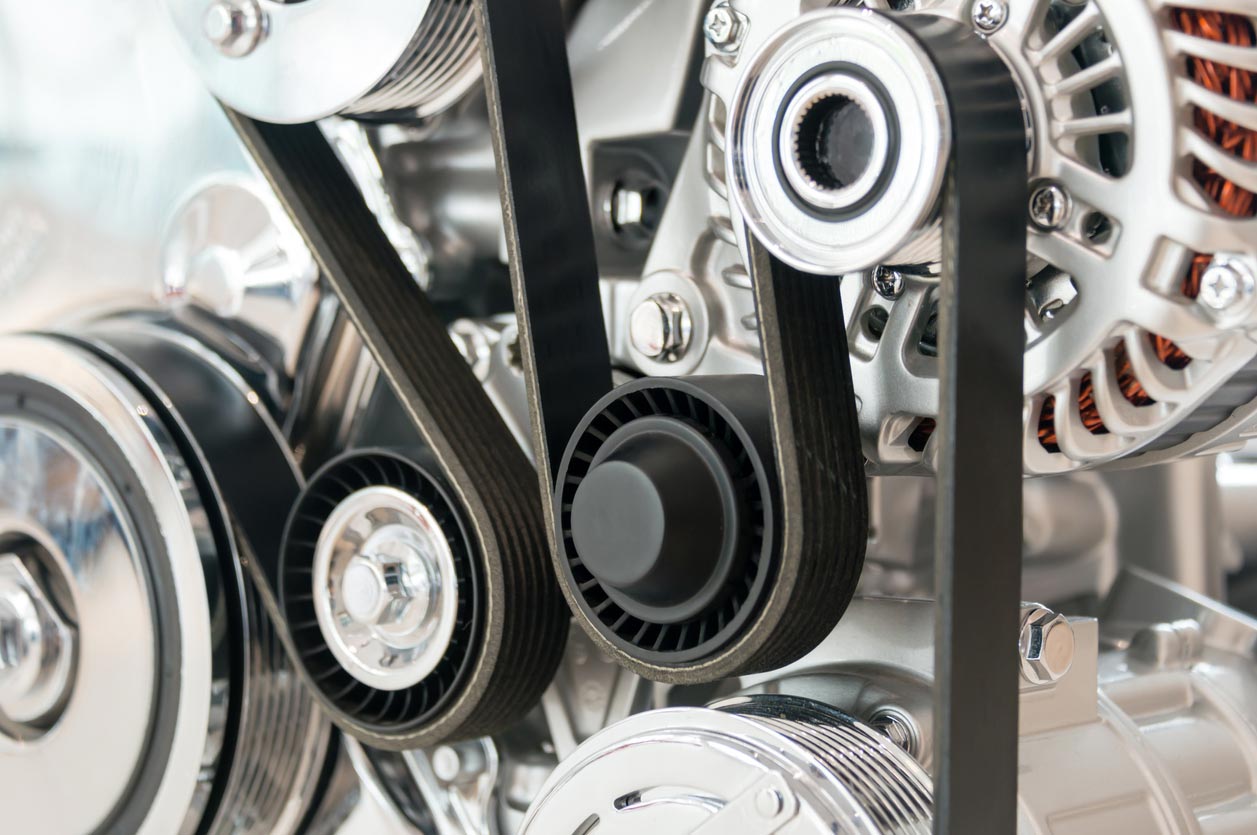Belts & Hoses: How Long Until They Need Servicing?
Park Automotive Belts & Hoses Service
Belts and hoses power nearly every feature in your vehicle today. While belts transfer energy from the crankshaft to the moving parts that start, steer, heat, and cool your vehicle, and keep your engine cranking correctly, hoses are equally as important, delivering hydraulic pressure to your brakes and other components. A broken belt or leaky hose can impact the performance of many parts of your vehicle, and lead to a disabled vehicle.
Best practice is to keep on a regular vehicle maintenance routine, and at Park Automotive, we are here to help you with that.
WHAT TYPES OF BELTS DOES MY CAR HAVE?
Although there are several types of belts, the most common are the following:
- Serpentine Belt (and other drive belts): These belts power your alternator, climate control, and power steering.
- Timing Belt or Chain: This is also known as a gilmer belt or camshaft belt. It helps turn the camshaft of your engine, coordinating the rhythm of your engine valves and pistons.
Other Belts: These may include, alternator belts, fan belt, power steering belt, A/C belts, and more. They all assist your serpentine belt to drive their respective parts.

WHAT TYPES OF HOSES DOES MY CAR HAVE?
The most frequently talked about hoses you’ll hear about in your routine maintenance, include:
- Fuel hoses: These connect your fuel tank to your engine. Made up of rubber that can withstand exposure to fuel in older vehicles, and in newer models pressurized metal tubes.
- Brake hoses: Designed to carry brake fluid from the metal brake lines to the calipers.
- Radiator hoses: Carry a coolant (mixture of water and antifreeze) between the radiator and the engine. They are made up of strong rubber to endure dramatic temperature changes as the coolant works to absorb heat from the engine, to be cooled by the radiator.
- Heater core hoses: Made up of durable rubber to carry hot coolant through the climate control system, to heat the interior cabin of your vehicle.
- Air Intake hoses: Carry oxygen to your engine to ensure proper air/fuel mixture for combustion.
HOW DO I KNOW WHEN MY BELTS & HOSES NEED SERVICE?
- If you hear a Chirping or squealing noise, it could mean that you have a loose or damaged belt, or possibly an oil or fluid leakage.
- Belt appears visibly loose. Replace it, unless it’s a serpentine belt designed for periodic manual adjustment.
- You can see visible belt or hose wear. Any cracks, rust, or rib damage on belts will require replacement. Holes in, or loose connecting, hoses should also be changed out.
- Fluid leak around a hose or under your vehicle.
- If your car is having troubles starting, the lights in your cabin and instrument panel are dim, or your battery light is on, these could all be factors of battery problems due to your alternator failing.
- Metal shavings in your engine oil, or the engine misfires, rattles, or won’t start, could be due to your timing belt or chain needing service.
- Vehicle system failure or overheating: Power steering, alternator, engine cooling, brakes, climate control: all can be disabled by a belt or hose failure.
Most manufacturers recommend replacing belts and hoses every four to six years. If you think that it’s time to get yours replace, book an appointment with us at Park Automotive or come on in with no appointment necessary.
As with all our services, we can service all Makes & Models with a complement 6-Month Free Roadside Assistance.
Weather you’re in Edmonton or surrounding areas of Sherwood Park, come into Park Automotive for your servicing needs!
